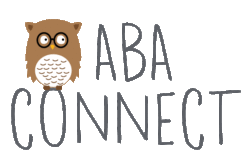Natural Environment Teaching (NET)
 Natural environment teaching is an instructional method used in ABA therapy that involves working in an environment that the child encounters in their everyday life, or an environment that the child prefers. When using this method, our therapists teach skills through play. For example, a therapist may identify that a child gravitates towards trains. They will teach various skills while playing with trains, such as counting the wheels on the train, labeling the color of the train, teaching the child to share the train with peers, etc.
Natural environment teaching is an instructional method used in ABA therapy that involves working in an environment that the child encounters in their everyday life, or an environment that the child prefers. When using this method, our therapists teach skills through play. For example, a therapist may identify that a child gravitates towards trains. They will teach various skills while playing with trains, such as counting the wheels on the train, labeling the color of the train, teaching the child to share the train with peers, etc.
Typically, Natural environment teaching looks less structured and more organic than discrete trial training (DTT). This type of teaching requires the therapist to be very aware of the targets that their learner has in their repertoire and to follow their learner’s lead as a guide to what will be motivating and engaging to the learner.
Some misconceptions are that if the child is not at the table, they are engaged in natural environment teaching. This is not always the case. Only when the therapist is utilizing the tools and interests in the natural environment, is this natural environment teaching. For example, sitting on the floor and asking a child to sort pictures of silverware is not natural environment teaching. Asking the child to sort the silverware into the silverware drawer as you unload the dishwasher is natural environment teaching. Natural environment teaching is present when there is a purposeful interaction with the environment to support the skills being trained.
Research indicates using natural environment teaching increases the likelihood that learners generalize their skills, or use their skills more readily outside of therapy. This type of training is what parents are most often doing with their children and is the type of training that is most likely to be retained and utilized across environments and maintained across time.
